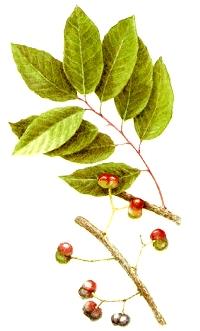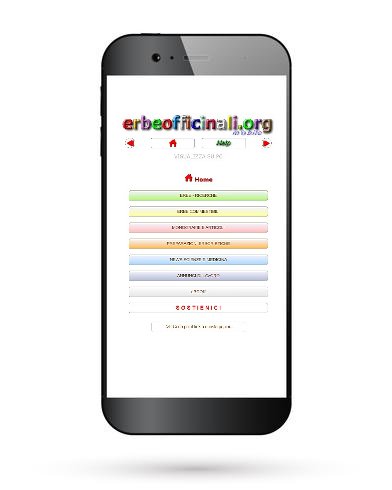
|
© I contenuti di questa pagina (escluse le immagini di pubblico dominio) sono di proprietà esclusiva dell'autore Alberto Tucci. Ne è vietata la copia, la riproduzione e l'utilizzo anche parziale in ogni forma. |
| rev. 19-07-2025 |
PYGEUM |
LEGGERE LA SCHEDA IN TUTTE LE SUE SEZIONI PER UNA CORRETTA INFORMAZIONE SULLE PRECAUZIONI D'USO
| CLASSIFICAZIONE Dominio: Eukaryota (Con cellule dotate di nucleo) Regno: Plantae Sottoregno: Tracheobionta (Piante vascolari) Superdivisione: Spermatophyta (Piante con semi) Divisione: Angiospermae o Magnoliophyta (Piante con fiori) Classe: Magnoliopsida (Dicotiledoni) Sottoclasse: Rosidae Ordine: Rosales Famiglia: Rosaceae Sottofamiglia: Amygdaloideae Tribù: Pruneae |
| NOMI POPOLARI E INTERNAZIONALI |
espandi ⇩ riduci ⇧Prugno Africano, Pigeo Africano, Red Stinkwood, Prunier D'Afrique, African Almond, Bitter Almond, Muchambati, Muchati, Tikur Inchet, Mkonde-konde, Muiri, Entasesa, Ngwabuzito, UMkakase, Inyazangoma-elimnyama, Rooistinkhout, Red Stinkwood |
| SINONIMI DEL NOME BOTANICO |
espandi ⇩ riduci ⇧Pygeum Africanum Hook.f., Prunus Capuronii Benoist, Pygeum Capuronii (Benoist) Ined. |
DESCRIZIONE BOTANICA
espandi ⇩ riduci ⇧ALBERO SEMPREVERDE ALTO 10-25 M CON FUSTO CILINDRICO DRITTO E CHIOMA DENSA E ARROTONDATA. FOGLIE SEMPLICI, ELLITTICHE, CORIACEE, LUNGAMENTE PICCIOLATE, LUNGHE 8-10 CM. FIORI PICCOLI, BIANCHI O CREMA, IN RACEMI ASCELLARI DI 3-8 CM. FRUTTI SIMILI A PICCOLE DRUPE ROSSE SCURE O VIOLACEE. DIFFUSO NEGLI HABITAT AFROMONTANI DELL'AFRICA ORIENTALE E AUSTRALE E IN MADAGASCAR. |
| COLORI OSSERVATI NEI FIORI |
| ________ BIANCO-GIALLASTRO |
| ________ BIANCO-SPORCO |
| ________ GIALLO-VERDASTRO |
| ________ GIALLOGNOLO |
| FIORITURA O ANTESI NOVEMBRE DICEMBRE GENNAIO FEBBRAIO (STAGIONE SECCA AFRICANA), CON PICCOLI FIORI BIANCO-VERDASTRI |
HABITAT
espandi ⇩ riduci ⇧Si trova negli habitat afromontani dell'Africa orientale e australe, così come in Madagascar. Cresce tipicamente tra i 900 e i 3400 metri di altitudine, in foreste pluviali di montagna, foreste montane e foreste ripariali. Predilige climi umidi con precipitazioni annue tra i 900 e i 3400 mm ed è moderatamente resistente al gelo. Questa specie è considerata una specie secondaria che necessita di luce. Si trova anche ai margini di foreste secche a galleria e in boschi misti di Podocarpus latifolius e Olea capensis subsp. hochstetteri. Il Prunus africana prospera in posizioni soleggiate e preferisce terreni da medi a leggeri con un pH compreso tra 5.5 e 6.5, ma tollera anche valori tra 5 e 7. |
| DISTRIBUZIONE GEOGRAFICA 2025 |
 |
| PERIODO BALSAMICO GIUGNO-SETTEMBRE (STAGIONE FREDDA/SECCA), QUANDO LA CORTECCIA RAGGIUNGE IL MASSIMO CONTENUTO DI PRINCIPI ATTIVI |
| DROGA UTILIZZATA CORTECCIA ESSICCATA (PYGEI AFRICANAE CORTEX) |
| ODORI DELLA DROGA LEGGERMENTE LEGNOSO, CON NOTE RESINOSE E TANNICHE |
| SAPORI DELLA DROGA FORTEMENTE AMARO-ASTRINGENTE, CON RETROGUSTO PERSISTENTE |
PRINCIPI ATTIVI
espandi ⇩ riduci ⇧1. Fitosteroli beta-sitosterolo (il più abbondante e studiato) Campesterolo Stigmasterolo Ruolo: Azione antinfiammatoria e inibizione della 5alfa-reduttasi (riduzione del diidrotestosterone, DHT). 2. Triterpeni pentaciclici Acido ursolico Acido oleanolico Ruolo: Attività anti-infiammatoria e anti-proliferativa sul tessuto prostatico. 3. Composti fenolici Ferulil-esteri (es. n-docosanol ferulato, n-tetracosanol ferulato) Acido ferulico Ruolo: Azione antiossidante e anti-edemigena (riduzione del gonfiore prostatico). 4. Alcoli grassi a catena lunga n-docosanolo n-tetracosanolo Ruolo: Contribuiscono all’effetto antiproliferativo sulla prostata. 5. Tannini e proantocianidine Effetto astringente e antiossidante. |
| PROPRIETÀ E INDICAZIONI REGISTRATE | |
| ook | PROSTATA (ADENOMA PROSTATICO) |
| ook | PROSTATA (IPERTROFIA PROSTATICA BENIGNA) |
| ook | PROSTATA (PROSTATITE) |
| ++ | ANTISETTICO ANTIBATTERICO |
| *Bibliografia relativa a proprietà e indicazioni Gli estratti devono essere standardizzati in β-sitosterolo (min. 0,5%) La terapia va protratta per almeno 3 mesi per valutare l'efficacia Registrare eventuali effetti collaterali gastrointestinali |
| ORGANI INTERESSATI DALL'AZIONE FITOTERAPICA |
| ORGANI E-O TESSUTI DI VARI DISTRETTI CORPOREI |
| PROSTATA |
| SISTEMA IMMUNITARIO |
ESTRATTI E INTEGRATORI STANDARDIZZATI
espandi ⇩ riduci ⇧Pygeum estratto lipido-sterolico 100-200 mg al giorno per 6 mesi Pygeum polvere 0.3 g per cps [assumere per almeno 2 mesi] Non consigliato in quanto l´efficacia e la sicurezza non sono determinabili. 1 cps 2-3 volte al giorno Pygeum Tintura Madre Preparata dalla corteccia essiccata dello stelo tit.alcol.65° |
| PIANTE CHE POSSONO AUMENTARE L'EFFICACIA CON DIVERSI MECCANISMI D'AZIONE (SINERGIE)* |
| ORTICA |
* Si tenga presente che talvolta la stessa erba indicata come sinergica o antagonista, potrebbe assumere entrambi i ruoli in funzione della dose utilizzata e/o della forma estrattiva. Rivolgersi sempre al fitoterapeuta per gli abbinamenti. |
| CONTROINDICAZIONI GRAVIDANZA, IPERSENSIBILITÀ ACCERTATA ALLE ROSACEAE, CARCINOMA PROSTATICO ACCERTATO O SOSPETTO, INSUFFICIENZA RENALE/EPATICA GRAVE, BAMBINI E ADOLESCENTI SOTTO I 18 ANNI, TERAPIE CON FARMACI ANTIANDROGENI (RISCHIO DI INTERAZIONE) |
| AVVERTENZE ASSUMERE PREFERIBILMENTE LONTANO DAI PASTI PER OTTIMIZZARE L'ASSORBIMENTO, MONITORARE LA SINTOMATOLOGIA URINARIA E I LIVELLI DI PSA DURANTE IL TRATTAMENTO, NON SUPERARE I 100 MG/DIE DI ESTRATTO SECCO STANDARDIZZATO, SOSPENDERE 2 SETTIMANE PRIMA DI INTERVENTI CHIRURGICI, PREFERIRE PREPARAZIONI DA FONTI SOSTENIBILI CERTIFICATE CITES, CONSULTARE L'UROLOGO IN CASO DI PEGGIORAMENTO SINTOMI |
NOTE DI FITOTERAPIA
espandi ⇩ riduci ⇧È efficace nel ridurre la tumefazione infiammatoria di prostata e vescicole seminali nell´ipertrofia prostatica benigna - ma non riduce il volume dell´adenoma prostatico. I risultati migliori si ottengono nelle fasi non ancora avanzate di ipertrofia e dove non sia ancora necessario l´intervento chirurgico. |
Sorveglianza alle reazioni avverse QUESTA PIANTA RIENTRA NELLA LISTA DEL MINISTERO DELLA SALUTE PER L'IMPIEGO NON AMMESSO NEL SETTORE DEGLI INTEGRATORI ALIMENTARI. |
BIBLIOGRAFIA, WEBLIOGRAFIA E ARTICOLI SCIENTIFICI SUL WEB
|

Foto o Immagine modificata per uso didattico
 Kalkman - PYGEUM.jpg)
Immagine creata con AI Google Gemini da erbeofficinali.org
 Altre Foto e Immagini di PYGEUM
Altre Foto e Immagini di PYGEUM




